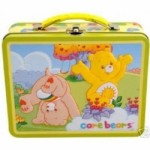I just finished a professional book study through the Arizona K12 Center. We read and discussed Sir Ken Robinson’s book Out of Our Minds: Learning to Be Creative, and I think there is a lot for schools to take to heart in this book.
First of all, did you know that according to the U.S. Bureau of Labor, 65% of grade school students today will be doing jobs that haven’t yet been invented? I find this statistic to be both invigorating and frightening, if indeed it is accurate [Feel free to check this source I stumbled on.] This statistic alone shows how much the future, which is so hard to predict, will depend on creative thinking.
Robinson’s definition of creativity is “the process of having original ideas that have value.” According to this definition, he traces the ways in which the traditional “academic” system fails many students by neglecting to develop in them their creative potential. His argument is that by valuing certain types of knowledge and undervaluing others, and by creating distinct and rigid categories for knowledge (for example, “the arts” vs. “the sciences”) educational institutions have limited the opportunities and encouragement of creativity.
He believes that there are sound economic reasons why schools need to focus on teaching creativity as a core value and skill set. Personally, I cling to the hope that there are reasons other than economic to teach creativity, and I believe Robinson would agree with me, but of course economic arguments are universally more persuasive to policy makers than arguments involving personal transformation.
Either way, a good question to ask ourselves as teachers is whether we are teaching for creativity. Robinson points out that there is a difference between teaching creatively (teaching is almost always a creative act) and teaching to encourage creativity in our students.
Here are some of his basic tenets of teaching for creativity (almost word for word from the book):
- Encouraging: Nurturing our students’ confidence to try.
- Identifying: Helping students discover their best medium for creativity.
- Developing: Teachers try to promote experimentation and willingness to make mistakes, encourage generative thought free from immediate criticism, encourage expression of personal ideas and feelings, convey understanding of the phases of creative work and the need for time, develop an awareness of the roles of intuition and aesthetics, encourage students to play with ideas and make conjectures, facilitate critical evaluation of ideas.
But Robinson also points out that teaching for creativity will not have its greatest impact in a vacuum. He says that administrators and other school leaders must make it a priority. Here are the principles he lays out for schools to use as they design themselves around teaching for creativity:
- Talent is diverse.
- Learning is personal.
- Life is not an academic exercise.
- Success creates success. (Build on students’ strengths.)
- Creativity is for everyone. (You rarely hear a first grader say “But I’m not creative!”)
- All schools are unique.
- We’re all in this together. (Form community and business partnerships.)
And schools need to remember that their teachers are creative people, too. There are probably many teacher leaders out there whose potential has simply never been identified, whose optimal medium of creative leadership has yet to be uncovered.
When I think about the possibilities for digital learning, for both teachers and students, and the possibilities to exchange ideas in such a variety of media, I reflect that somehow, schools need to learn from the corporations and organizations that have thrived by creating a culture of creativity. Somehow, the drive for creativity needs to bust through the tangled layers of bureaucracy, accountability and policy that I see as being a somewhat stultifying buffer between the classroom with its vast creative potential, and this complex, dynamic world and the ideas and actions it will demand from us all in the coming decades.
I see so much creative thinking and so many connections possible, and so many of the tools our classrooms need just out of reach due to funding, time and restrictive policies, and yet there is also much in our classrooms that we can control, and we always have the opportunity to help our students explore their own minds and the possibilities within them.
I am committed to seeking out more ways of teaching for creativity. How about you?









